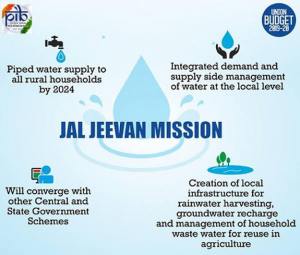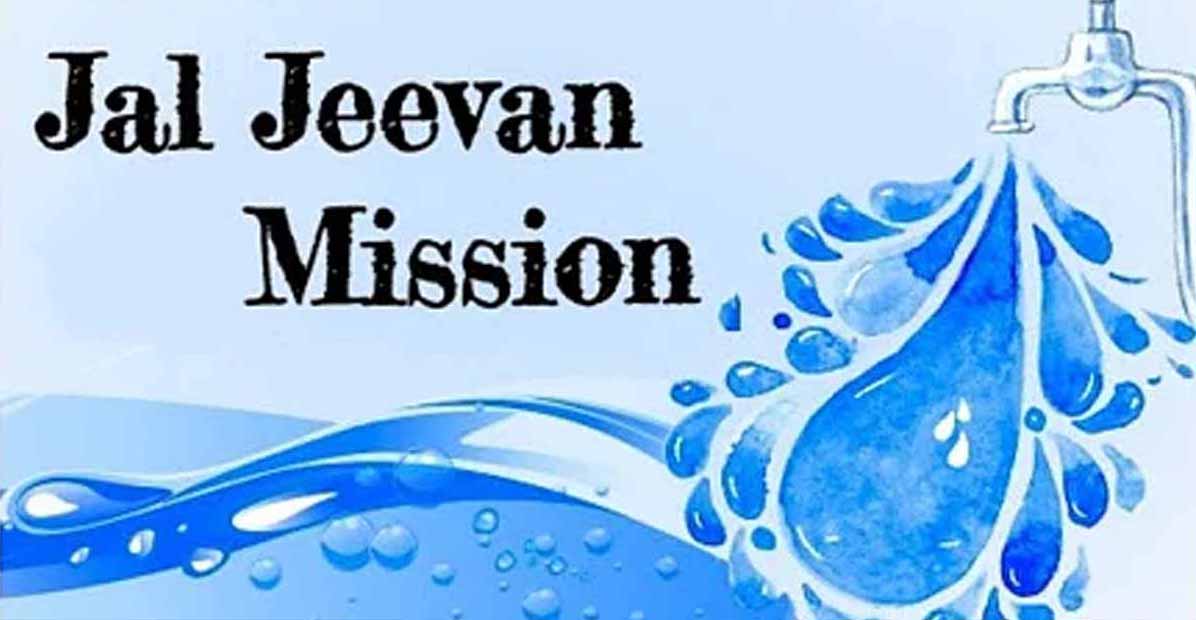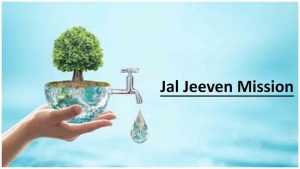The Government says, is a 37percentage point increase from 2019 when the Jal Jeevan Mission was introduced, and its stated purpose is to guarantee at least 55 litres of drinkable water per person per day to every rural family.
Water quality monitoring and testing, as well as ensuring agricultural sustainability, are all part of the Jal Jeevan Mission.
Grey water treatment and reuse, as well as the augmentation of existing drinking water sources and the implementation of a drinking water delivery system, are all made possible by this method of water conservation.
Why Jal Jeevan Mission Was Needed?

India has access to around 4% of the world’s water resources, placing it among the top 10 water-rich countries. Growing demand for water in India is a direct outcome of the country’s expanding population, increasing urbanisation, and improving standard of living. From a projected 710 BCM in 2010 to an estimated 1180 BCM in 2050, the country’s water consumption is projected to increase by 77%. Several decades ago, the government had established a few strategies at the national level to handle this strong demand for water. In contrast, the recently announced government initiative, Jal Jeevan Mission (JJM), beginning in 2019, is novel in its emphasis on the necessity of obtaining 100% Functional Household TapConnection (FHTC) in a very short time frame.
There is a severe water shortage in India. Twenty-one Indian cities may reach “Day Zero” in the next several years, as reported by the NITI Aayog’s Composite Water Management Index (CWMI) 2018. When a community has no reliable source of potable water, they have reached “Day Zero.”
Indian cities like Bengaluru, Chennai, Delhi, and Hyderabad are particularly at risk. The majority of Indian homes (75%) do not have access to piped water, and even more (84% in rural areas), according to the survey.
The project will get Rs 60,000,000,000 in budgeted funding in 2022.
Jal Jeevan Mission:
By 2024, every home in rural India will have a link to clean, reliable water from a public system rather than relying on private wells. Source sustainability measures will be introduced as programmed requirements as well.
 Source: PIB
Source: PIB
such as grey water management, water conservation, and rain water collecting, which allow for recharging and reuse.
Essential parts of the Jal Jeevan plan:
- Rural residents have access to a piped water system
- Think about safe water sources first.
- Upgrade the network:
- Analyzing Water Quality
- Community-based water management is at the heart of the Jal Jeevan Mission.
- Integral part of the goal is to spread information, teach people, and get the word out to as many people as possible.
Current Results: Jal Jeevan Mission
Over six Indian states have reached 100% FHTC as of 15 August 2019. Goa, Telangana, the Andaman and Nicobar Islands, Puducherry, Dadra and Nagar Haveli, Daman & Diu, and Haryana are all part of this group of Indian states.

More than 5.6 Crore (56 million) homes have had piped water installed since the Jal Jeevan Mission began. 62% of rural homes in India were found to have completely operational tap water connections in a recent assessment conducted by a private organisation.
This initiative has resulted in every single school in over 15 states having a fully functional household tap connection (FHTC).
Issues that already exist
The difficulties vary from one area to another. As a result of disparities in precipitation patterns across the country, surface water availability also varies greatly from area to region.
Heavy reliance on conventional methods: As it stands, between 45 and 50 percent of homes in India’s rural areas have access to piped-in water. About 55 percent of the population of India does not have access to piped-in water and must use alternative water supplies.
There is a huge gap in performance across different regions. It was stated that more over 80% of homes in Tamil Nadu, Himachal Pradesh, Go, and Puducherry had completely working connections, whereas fewer than 50% of homes in Rajasthan, Kerala, Manipur, Tripura, Maharashtra, Madhya Pradesh, Mizoram, and Sikkim did.
About 75% of homes had access to water every day, whereas 8% had access just once per week.
Three hours a day is the average amount of time that homes get running water.
Additionally, chlorine contamination is noted in the study.
Even though bacteriological contamination was found in just 7% of the samples, most of the schools and anganwadi centres had levels of residual chlorine that were well over the safe limit.
The scheme’s development was hampered by the widespread spread of COVID19.
 Source : G.O.I.
Source : G.O.I.
Next steps?
In communities where piped water is already available, the remaining homes should be retrofitted.
It is recommended that a single-village system be implemented in areas where there is a sufficient quantity of high-quality surface water.
Villages having a large supply of mediocre quality water should have it purified before distribution.
Water purification and purification systems powered solely by the sun should be prioritised in remote tribal or woodland locations.Bulk water transfer treatment plants and distribution networks are being developed and implemented in water-stressed regions.













